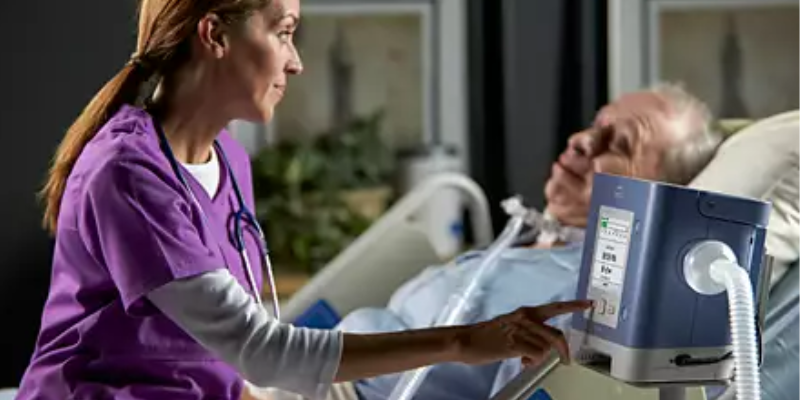
Have you ever wondered about the difference between invasive and non-invasive ventilation? Invasive and non-invasive home ventilation are two forms of ventilatory support used for acute and chronic respiratory failure. These two forms of ventilation can be life-saving for patients with respiratory failure and other respiratory conditions. Today's blog will discuss the difference between invasive and non-invasive home ventilation.
Invasive Home Ventilation
Invasive ventilation requires the patient to be sedated. During the procedure, a tube is inserted into the patient's throat—this process is called tracheal intubation. Next, the endotracheal tube is connected to the ventilator to help the patient breathe. The ventilator pushes air and oxygen into the lungs while holding consistent low pressure to help prevent the lungs from collapsing. This form of ventilation is painless, but the patient may experience discomfort from the endotracheal tube because they can't talk or eat by mouth.
Non-Invasive Home Ventilation
Non-invasive ventilation is another form of ventilatory support, but differently from invasive ventilation, it does not require sedation or an endotracheal tube. Non-invasive ventilation has become more and more common in the management of acute and chronic respiratory failure. Non-invasive ventilation delivers oxygen to the patient through a face mask that covers the patient's nose and mouth. This form of ventilation utilizes positive airway pressure to make breathing easier. Common forms of non-invasive home ventilation include CPAP and BiPAP. Non-invasive ventilation is less stressful for the patient since the patient can still talk and eat with this form of ventilation, making the overall experience more comfortable.
AeraTech's Home Ventilation Services
At AeraTech Medical, we provide respiratory care services and quality respiratory equipment, including invasive and non-invasive. Our personalized home ventilation programs fit each patient's unique needs. To learn more about our comprehensive respiratory equipment and services, visit our website or reach out to get in touch with our team of respiratory therapists.
Both invasive and non-invasive ventilation has the potential to save the lives of individuals experiencing acute or chronic respiratory failure. While non-invasive ventilation has gained popularity due to its versatility and flexibility, both forms of mechanical ventilation can aid in improving patients' breathing and accelerating their recovery. If you want to learn more about the two different types of mechanical ventilation, please contact our team. We are happy to answer any questions you may have!
June 22, 2023 by Aeratech Medical


